Gluing leather to plastic is a common task when creating furniture, purses and wallets, or other small items. It can be tricky, however, since the two materials are made of very different substances. For that reason, it’s important to choose a high-quality adhesive specifically designed for both leather and plastic in order to ensure that your project will last. In this article, we’ll discuss the best methods for gluing leather to plastic, as well as answer some frequently asked questions about working with these two materials. Read on to learn more!
What Kind of Glue Will Stick to Leather and Plastic?
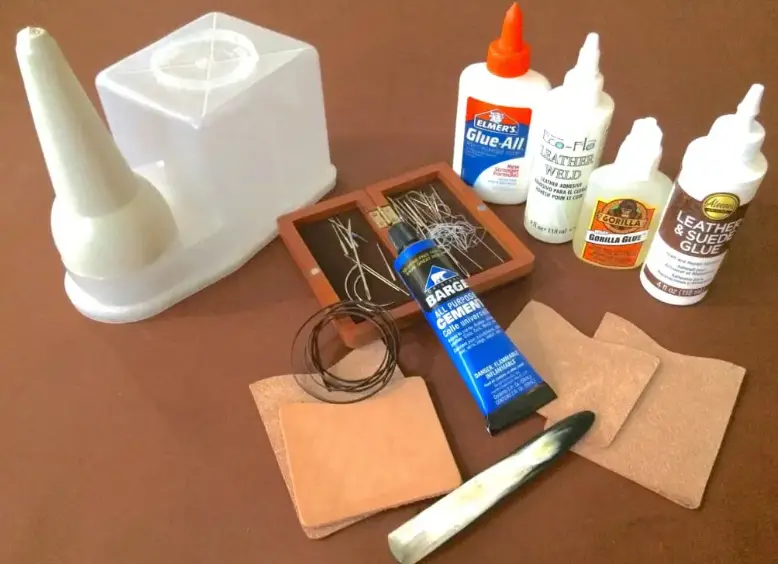
Contact cement
Contact cement is the best choice for gluing leather and plastic together. This type of adhesive doesn’t require any drying time and forms a strong bond when placed between two clean surfaces. Contact cement also won’t cause any discoloration or cracking on either material, making it a great choice for projects where aesthetics are important. When using contact cement, be sure to carefully follow the directions of the adhesive to ensure proper application.[1]
Epoxy resin
Epoxy resin is a type of glue that can be used to bond leather and plastic together. This adhesive sets quickly and forms a durable bond that won’t break under pressure or time. When using epoxy resin, it’s important to use an appropriate amount and to make sure the two surfaces are aligned properly before curing.[1]
Super glue
Super glue is a strong adhesive that can be used to bond leather and plastic together. It sets quickly and forms a permanent bond, but it’s important to note that super glue isn’t designed to handle large amounts of pressure or strain. Therefore, it’s not recommended for applications where the glued objects will need to bear weight or endure heavy use.[1]
Step by Step How to Glue Leather to Plastic
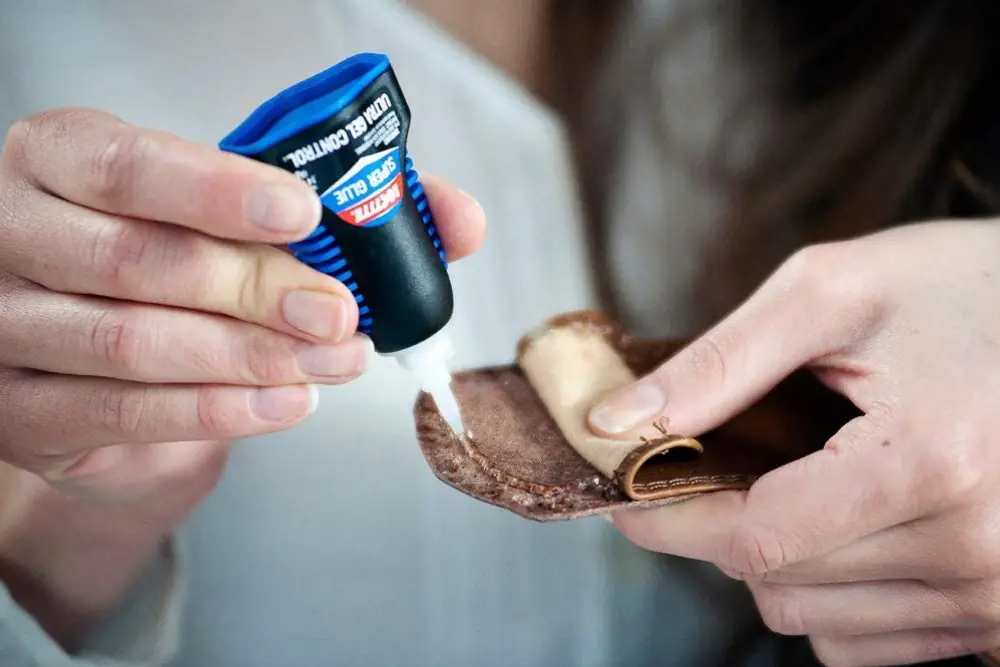
Cut the Leather and Plastic
The first step is to cut the leather and plastic pieces according to the size you need. Make sure that they fit together well and any edges are slightly rounded off.[3]
Apply Adhesive to the Plastic
Using a paintbrush or cotton swab, evenly apply the adhesive to both sides of the plastic piece. Make sure every part is covered with a thin layer of glue and that there are no air bubbles between the surfaces.[3]
Apply Adhesive to the Leather
Using the same paintbrush or cotton swab, apply a thin layer of adhesive to the leather piece. Make sure it’s evenly applied and that there are no air bubbles between the surfaces.[3]
Press the Pieces Together
One the adhesive is applied to both pieces, press them together and use a rubber mallet or other blunt object to gently hammer around the edges. This helps seal the bond between the two pieces.[3]
Let the Glue Dry

Let the glue dry for at least 24 hours before using the material. This helps create a strong and durable bond between the leather and plastic pieces.[3]
Trim the Excess Leather and Plastic
Once the glue is dry, use a knife or other sharp object to trim off any excess material. This makes the overall look of your project more polished and professional.[3]
Apply a Second Coat of Adhesive
If desired, a second coat of adhesive can be applied to the leather and plastic pieces. This helps create an even stronger bond between the two materials.[3]
Test the Bond
Once the adhesive is dry, it’s important to test the bond between the leather and plastic pieces. Gently tug on them to make sure they are securely attached and won’t easily come apart.[3]
Finish the Edge
If desired, a leather-sealer can be used to finish the edges of the project. This helps waterproof and protect the bond between the two pieces.
With these steps, you now know how to glue leather to plastic! Follow these instructions carefully and you’ll have a secure and durable bond that will last for years.[3]
Another Ways on How to Glue Leather to Plastic
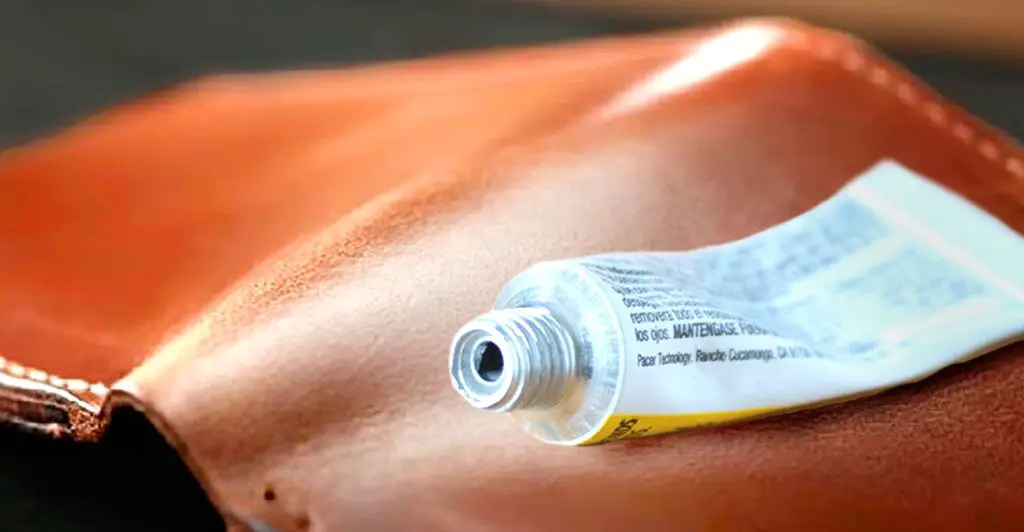
Adhesive Tape
Using adhesive tape is an easy way to temporarily attach leather to plastic. Take a roll of double-sided adhesive tape and apply it to the back of the leather piece, making sure it covers all parts that will be in contact with the plastic surface. Peel off the backing paper from one side of the tape and press it firmly against the plastic surface.
Make sure there are no air pockets between the tape and plastic. Once it’s firmly attached, peel off the other backing paper and press the leather piece against the adhesive-covered plastic surface.[2]
Cable Ties
An effective but somewhat more complicated method is to use cable ties. Make small holes in the plastic surface and leather piece, making sure they line up when placed against each other.
Take a few cable ties and thread them through the holes, tightening the ends around the flaps of the leather piece. The cable ties will hold the two pieces together firmly while still allowing for some degree of movement.[2]
Use a Household Iron
Another great way to attach leather to plastic is by using a household iron. Place the leather piece on top of the plastic surface and set the temperature of your iron to low-medium heat. Slowly move the iron over the leather in a circular motion, pressing firmly so that it will adhere to the plastic.
Apply Super Glue
Lastly, you can use super glue to attach leather to plastic. Start by applying a small amount of super glue on the back side of the leather piece. Make sure not to apply too much, as this could cause it to seep through and potentially damage the plastic surface. Then press the leather against the plastic surface and hold it in place for a few seconds until the glue has dried.[2]
Use a Hot Glue Gun
Using a hot glue gun is also an effective way to attach leather to plastic. Start by heating up the hot glue gun and applying a thin layer of glue on the back side of the leather piece. Make sure not to apply too much, as this could cause it to seep through and potentially damage the plastic surface.[2]
Use Epoxy
If you’re looking for a more permanent solution to attach leather to plastic, then you may want to consider using epoxy. Start by mixing the two-part epoxy together and applying it on the back side of the leather piece. Once it’s spread out evenly, press the leather against the plastic surface and hold it in place for a few seconds until the epoxy has dried.[2]
Welding the Pieces Together
Finally, if you’re looking for an even more permanent solution to attaching leather to plastic, then welding may be the best option. Start by heating up a welding gun and running it over the surface of the leather piece.
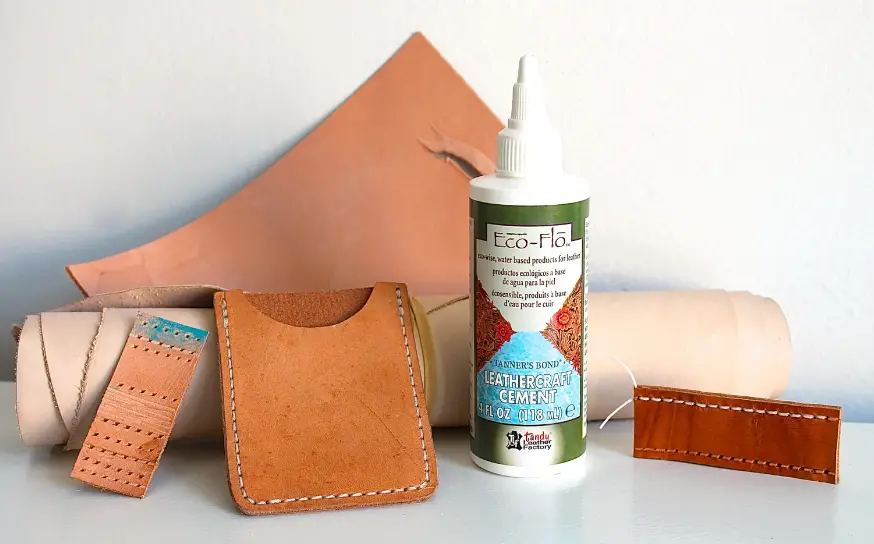
Make sure not to leave the gun in any one spot for too long, as this could cause the fabric to burn. Once it has cooled off, press the leather piece firmly against the plastic surface and weld it in place.[2]
Riveting the Leather and Plastic Together
Riveting is another great option for attaching leather to plastic. Start by drilling two small holes in the plastic surface and leather piece, making sure they line up when placed against each other. Take a few rivets and thread them through the holes, tightening the ends around the flaps of the leather piece. This will hold the two pieces together firmly while still allowing for some degree of movement.[1]
Using a Soldering Iron
Using a soldering iron is also an effective way to attach leather to plastic. Start by heating up the soldering iron and running it over the surface of the leather piece. Make sure not to leave the soldering iron in any one spot for too long, as this could cause the fabric to burn.
Once it has cooled off, press the leather piece firmly against the plastic surface and solder it in place.[1]
Bolting the Two Pieces Together
Bolting is another great way to attach leather to plastic. Start by drilling two small holes in the plastic surface and leather piece, making sure they line up when placed against each other. Take a few bolts and thread them through the holes, tightening the ends around the flaps of the leather piece. This will hold the two pieces together firmly while still allowing for some degree of movement.[1]
How to Care for Leather and Plastic Items?
Leather and plastic items are similar in some ways, but they require different care. Here are some tips for how to best look after them:
Leather Care
- Clean your leather item regularly with a soft cloth or brush. This will help remove dirt and grime that can cause the leather to crack over time.
- Avoid using harsh soaps and cleaning products on leather, as these can cause damage to the material.
- If your item gets wet, try to dry it off as soon as possible, away from direct heat or sunlight. This will help maintain its integrity and color over time.
- Once a year, use a leather conditioner to keep your item looking its best.
Plastic Care
- Avoid using harsh chemicals on plastic items, as these can cause discoloration and melting of the material.
- Dust your plastic item regularly to keep it looking fresh and new.
- If your plastic item needs washing, use a mild detergent in warm water to get the job done.
- If the item gets wet, let it dry naturally and away from direct heat or sunlight.
- Use a soft cloth to clean any smudges or fingerprints on plastic surfaces.[1]
Some Precautions on How to Glue Leather to Plastic
It is always wise to be extra careful when dealing with complex materials like leather and plastic. Before you start the process of gluing, make sure that the surfaces are free from dirt, dust, oil or any other contaminants. If there is any residue left on either surface, it can affect your ultimate result.
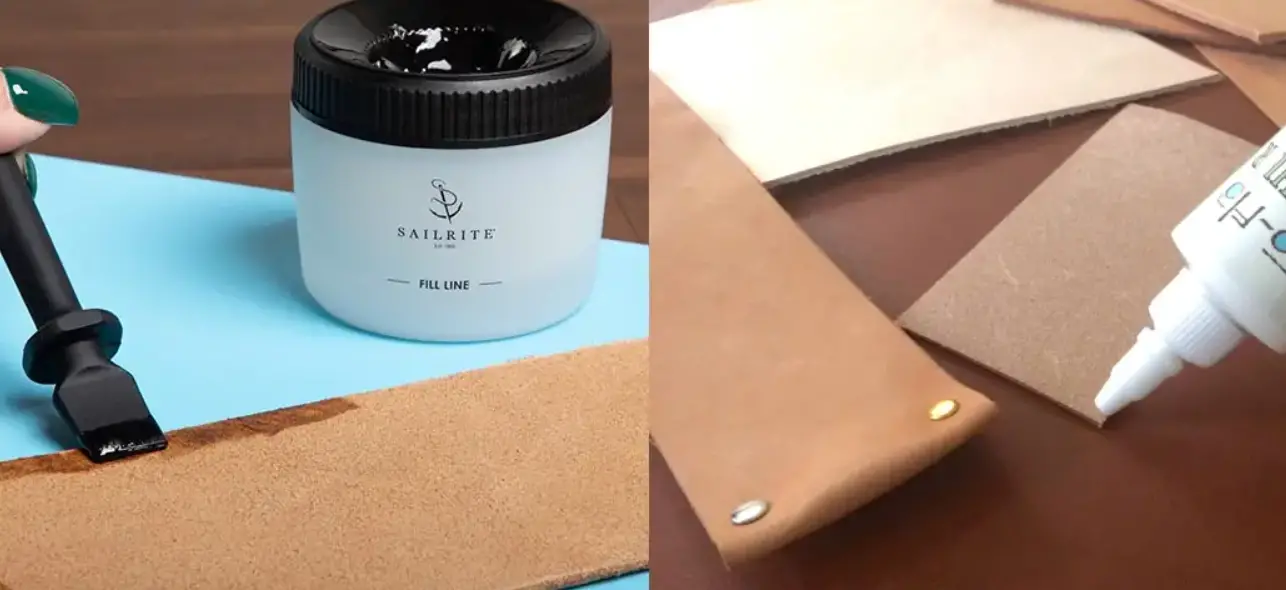
Additionally, always check if both surfaces are compatible with each other and that they are of similar type, preferably leather to plastic.
Once you have made sure that the surfaces are ready for gluing, make sure to use the right kind of glue. Make sure that it is suitable for use on both the leather and plastic material. Some popular types of glue used specifically for this purpose include contact adhesive, anaerobic adhesive.[1]
Additional Tips and Advice
When gluing leather to plastic, there are some additional tips and advice that can be useful.
- Use rubber cement if you’re working with thin pieces of leather or vinyl. This type of adhesive is designed specifically for flexible materials like this, so it will be able to form a strong bond without cracking or peeling off over time.
- If you’re using a different type of adhesive, it may be wise to test it out on an inconspicuous area first. This will help ensure that the product won’t damage either the leather or plastic surface.
- Make sure to read and follow all directions for your adhesive product carefully. Different brands and types of glues have their own specific guidelines that will be important to adhere to for the best results.
- Apply a thin layer of adhesive to both surfaces before pressing them together. This will help ensure an even, strong bond between the leather and plastic.
- Place something heavy on top of the glued area while it dries. This can help keep pressure on the pieces and prevent them from slipping out of place.
- Allow time for the glue to dry completely before handling or using the item. This will help ensure that it is properly secured and ready for use.[1]
FAQ
What is the best glue to use for leather?
The best glue for leather is a flexible, waterproof adhesive. The most popular and reliable brands are Tandy Leather Pro, Super Glue, Gorilla Glue, and E6000. Be sure to read the label to make sure that it’s suitable for use with both leather and plastic materials.
What can glue leather?
There are several types of adhesive that can be used to glue leather, with each offering their own advantages and disadvantages. The most popular adhesives for gluing leather are acrylic-based contact cement, rubber cement, hot melt glue, and epoxy.
What is the strongest glue to use on plastic?
The strongest glue to use on plastic is epoxy. Epoxy adhesives can bond similar or dissimilar materials, and are resistant to both heat and water. It’s important to read the label before using this type of adhesive, as some brands require special preparation of the surfaces before application.
Does Gorilla Glue work on leather?
Yes, Gorilla Glue can be used to glue leather. It is a strong adhesive that bonds quickly and creates an extremely durable bond. Be sure to read the label before applying the glue, as it may require special preparation of the surfaces before application.
Is super glue or Gorilla Glue better for plastic?
It depends on what type of plastic you are working with. Super Glue is generally better for softer plastics, such as vinyl or ABS plastic, while Gorilla Glue works better with harder plastics like polypropylene and polyethylene.
Is super glue permanent on plastic?
In most cases, yes. Super Glue creates a strong bond with plastic that is generally very difficult to remove without damaging the surface of the material. However, you should always read the label and follow the instructions carefully for best results.
Will hot glue work on plastic?
Yes, hot glue can be used to bond plastic materials together. However, it should only be used for temporary bonds as it doesn’t create a very strong hold and can easily come apart under pressure or with heat.
What glue is stronger than superglue?
Epoxy is generally stronger than superglue. It is an advanced adhesive that can be used to bond similar or dissimilar materials, and it creates a very strong and durable bond. However, it usually requires special preparation of the surfaces before application.
Useful Video: BEST LEATHER GLUE 2021
Conclusion
Gluing leather to plastic can be a tricky task. But, with the right tools and techniques, it can become easier and there are several options available for you to choose from. When gluing leather to plastic, make sure that you use the correct adhesive and follow all of the instructions carefully in order to ensure that your work is successful. As long as you take your time and pay attention to the details, gluing leather to plastic can be a rewarding experience. Good luck!
References
- https://leatherek.com/how-to-glue-leather-to-plastic/
- https://leatherinsights.com/how-to-glue-leather-to-plastic/
- https://diyquickly.com/how-to-glue-leather-to-plastic/


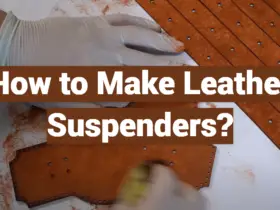

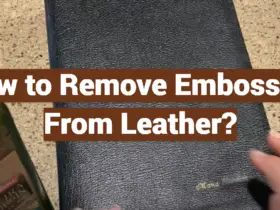
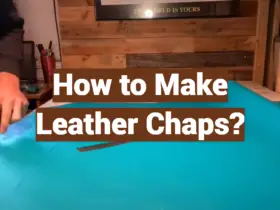

Leave a Reply